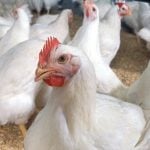
Tag Archives weed control

Mustard acres feeling squeeze from canola

Narrow-leaved hawk’s beard travelling
This noxious weed is spreading outside of northwest Sask. and the Alta. border

Controlling cleavers without quinclorac
With quinclorac off of the herbicide menu, farmers will need to use other tools

Back to the agronomy basics in canola
Experts advise growers to focus on quality seed and nitrogen before less conventional inputs

Are there resistant weeds in your fields?
The answer to this question is probably yes. Testing can give you a definite answer

Spraying your fungicide in “the zone”
With Bayer’s new “Zone Spray,” farmers can skip the fungicide in some parts of the field

Old, new products deliver multi-modes of action
The challenge is to hit weeds with two or more active ingredients to reduce resistance

Timing is key to whipping weeds
It’s easiest to kill weeds when they’re actively growing. Make sure you know when that is

Training cattle to eat leafy spurge
With leafy spurge acres spreading, it’s time to bring on some new tactics

Stem Shock: new herbicide in development
A new mode of action based on RNA could soon be killing a weed near you


